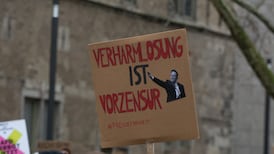Deutsche Bank plunged to its worst quarterly loss in four years after it took nearly $4 billion in charges to try to draw a line under a slew of scandals and boost its balance sheet without asking shareholders for cash.
Shares in Germany’s largest lender hit their highest level in nearly a year after it raised its capital levels closer to European peers. But with so much uncertainty surrounding future capital requirements for the industry, a rights issue, which would dilute existing investors, remains a risk, said Deutsche.
“We have been very consistent. We have said we do not believe it is in our shareholders’ best interests. We have shown that we are willing to take pain,” co-chief executive Anshu Jain said when asked about a possible rights issue.
The bank posted a fourth-quarter pre-tax loss of €2.6 billion partly due to a €1 billion hit to cover legal risks, including its potential exposure to an industry-wide scandal involving fixing of benchmark interest rates. It also revealed a €1.9 billion impairment charge on underperforming assets, shifting them to a “non-core” division for potential run down or sale.
Deutsche Bank is embroiled in several legal disputes, including a decade-long legal battle over the 2002 bankruptcy of Germany’s Kirch Media Group, a carbon trading scandal, as well as being one of a dozen banks under official investigation for allegedly rigging global benchmark interest rates, including the London Interbank Offered Rate (Libor).
The bank said it was too early to say if allegations its staff were involved in rigging Libor would be settled this year.
UBS and Barclays paid nearly $2 billion to settle such allegations.
The bank had guided investors in December to weaker fourth-quarter earnings. Since the end of 2011 it has reduced employees by 2,777, the results showed. The bank is in the midst of a restructuring drive designed to achieve annual cost savings of €4.5 billion by 2015.











